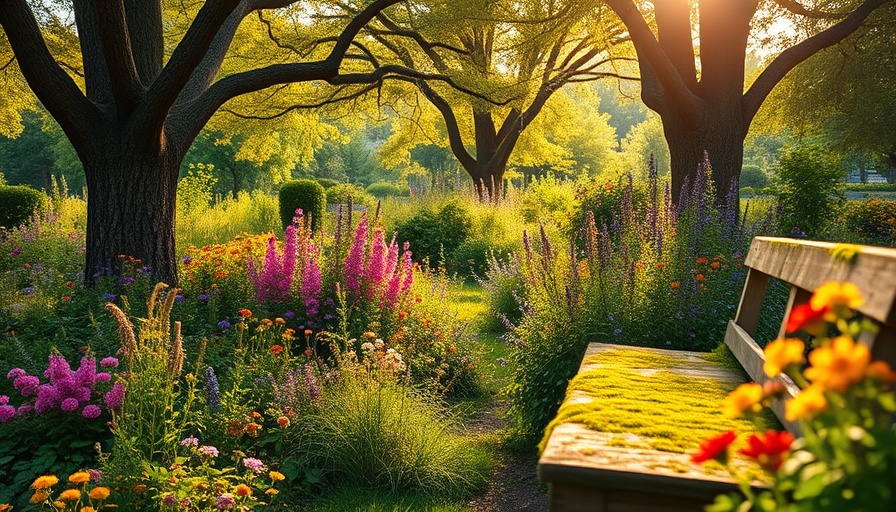
Unlocking the Benefits of Earth-Friendly Gardening
In a world increasingly aware of environmental challenges, homeowners are discovering the significant benefits of earth-friendly or regenerative gardening. This approach not only enhances aesthetic appeal but also plays a crucial role in restoring biodiversity and improving soil health. As landscape professionals highlight, by adopting these sustainable practices, you can breathe new life into your outdoor spaces, making them more than just visually appealing but also beneficial for the environment.
Understanding Regenerative Gardening
Regenerative gardening emphasizes leaving the land in better condition than it was found. According to landscape designer Melanie Hick, this process involves contributing to the restoration of ecosystems, even on a small scale. Techniques such as growing cover crops, incorporating legumes for nitrogen, and enriching soil with garden waste compost create a thriving habitat for various species while simultaneously improving the health of the soil.
"Working with natural processes instead of against them is key," explains landscape designer Harry Holding. This holistic approach opens up a pathway to build an ecosystem where plants, animals, and microorganisms thrive together, leading to vibrant, flourishing gardens.
The Synergy of Biodiversity
An integral aspect of regenerative gardening is fostering biodiversity. By attracting solitary bees, birds, and other wildlife, homeowners can enhance their garden’s resilience against pests and diseases. Incorporating strategic elements like sand beds and habitat poles provides a much-needed sanctuary for local fauna. This helps to create a balanced ecosystem that naturally regulates itself.
Guy Barter, chief horticulturist at the Royal Horticultural Society, warns against conventional fertilizers and pesticides, which can inhibit this regenerative capability. Instead, regenerative gardeners often rely on natural fertilizers and amendments that improve soil structure and promote microbial activity.
Regenerative Gardening vs. Other Eco-Friendly Practices
While regenerative gardening overlaps with other eco-conscious initiatives like wildlife gardening and rewilding, it has a distinct focus on the soil's health. It specifically addresses the urgent need for remediation of degraded landscapes, drawing attention to the difference between simply allowing nature to take its course (rewilding) and actively working to improve the environment.
For those passionate about gardening and sustainability, embracing these practices can transform an ordinary yard into a lush, productive space that supports local wildlife while also offering personal satisfaction and joy.
Your Path to a Sustainable Garden
If you're eager to make a change, consider consulting with a landscape designer experienced in regenerative practices. Start by asking questions about the materials they use, their approach to plant selection, and how they plan to enhance your garden's biodiversity. The right design can seamlessly integrate these sustainable methods into your vision.
Why This Matters Today
The push for sustainable practices has never been more significant, aligning with a broader cultural shift towards environmental responsibility. A well-designed regenerative garden not only contributes to a healthier planet but also adds value to your property by attracting buyers who prioritize eco-friendly living.
Join the Movement Today
Realize the potential of your garden and the impact you can have on the environment. By incorporating regenerative gardening techniques, you enrich your outdoor space and contribute to a larger mission of sustainability. It's not just about growing plants; it's about nurturing the earth.
Let Us Design, Plan & Build Your Next Home or Remodel. Call 831-521-7729!
 Add Row
Add Row  Add
Add 




 Add Row
Add Row  Add
Add 

Write A Comment